1. Overview
Sandra Dee, born Alexandra Cymboliak Zuck (1942-2005), was an American actress and model who rose to prominence as a quintessential teen idol in the late 1950s and early 1960s. Her wholesome, innocent image, carefully cultivated by the Hollywood studio system, captivated audiences in films like Gidget and A Summer Place. Despite her widespread popularity and box-office success, Dee faced immense personal struggles behind the scenes, including childhood sexual abuse, battles with anorexia nervosa, depression, and alcoholism, exacerbated by the restrictive pressures of her public persona. Her career eventually declined, and she largely withdrew from acting, dedicating her later years to managing her health challenges. Dee's life and career serve as a poignant reflection of the intense demands placed upon young actresses within the studio system and her enduring cultural impact is underscored by her continued presence in popular culture.
2. Early Life and Background
Sandra Dee's early life was marked by a rapid entry into the entertainment industry, shaped by her family environment and the challenges she faced from a young age.
2.1. Birth and Family
Sandra Dee was born Alexandra Cymboliak Zuck on April 23, 1942, in Bayonne, New Jersey. She was the only child of John Zuck and Mary Cymboliak Zuck, who had met at a Russian Orthodox Church dance as teenagers and married shortly thereafter. Her parents divorced before Dee was five years old. Dee was of Carpatho-Rusyn ancestry and was raised in the Orthodox faith. Her son, Dodd Darin, noted in his biographical book about his parents, Dream Lovers, that Dee's mother Mary and aunt Olga were "first generation daughters of a working-class Russian Orthodox couple," and Dee herself recalled belonging to a Russian Orthodox church where social events included dancing.
There has been considerable debate regarding Dee's actual birth year. While her son's book suggests she was born in 1944, claiming that Dee and her mother falsely inflated her age by two years to secure more modeling and acting work at a younger age, legal records consistently indicate her birth year as 1942. These records include her California divorce record from Bobby Darin, the Social Security Death Index, and her own cryptstone. Further evidence from a 1950 census record lists her as 8 years old, implying a 1942 birth year. Additionally, a May 1942 article in The Bayonne Times newspaper reported Mary Zuck and her one-month-old daughter Alexandra Zuck attending a birthday party, definitively placing her birth in 1942.
After her parents' divorce in 1950, her mother married real estate executive Eugene "Gene" Douvan in New York City in 1951. It was later revealed that Douvan, who had immigrated illegally to the USA and used aliases such as Eugene George Stewart and Frederick Von Bergner, reportedly sexually abused Dee after marrying her mother. Dee's mother, Mary, worked as a secretary in a real estate office in 1950. Eugene Douvan later died of heart ailments in 1956. On March 21, 1960, her birth city of Bayonne, New Jersey, honored her by declaring "Sandra Dee Day," which she attended, visiting her childhood school and church.
2.2. Childhood and Early Career Beginnings
Dee began her career as a professional model at the remarkably young age of four, quickly transitioning to television commercials. She adopted the name Sandra Dee early in her career. During her modeling years, she attended the Professional Children's School in New York. By the age of 12, she was reportedly discovered on Park Avenue in New York City by producer Ross Hunter.
Dee recalled that she "grew up fast," primarily surrounded by older individuals, and was "never held back in anything [she] wanted to do." Despite her early success, her modeling career took a toll on her health. She attempted to lose weight to conform to the "skinny" ideal of high-fashion models, which led to an improper diet that "ruined [her] skin, hair, nails-everything." Her body became unable to digest food, requiring medical intervention for her to regain her health and "learn to eat all over again."
Despite these health challenges, Dee earned a substantial income from modeling. In 1956, she earned 75.00 K USD, which she used to support herself and her mother after the death of her stepfather in 1956. Her modeling salary was reportedly higher than what she would later earn as an actress; in 1956, she was making 120 USD per day, an amount equivalent to approximately 1.40 K USD in 2025. By 1955, she was recognized as a "top model," living in Bayonne and attending 9th grade at School #3, using the name Sandra Douvan. She had recently moved to a "swank hotel" in New York City and had numerous modeling jobs with publications like Good Housekeeping, Glamour, and The New Yorker, and appeared on at least four television shows, including one with Eddie Fisher. She was also the Whitman Sampler poster girl. Her parents relocated to New York City to support her career, and her earnings were placed into a "Trust Fund" for her future. In 1956, she moved from New York to Hollywood. She graduated from University High School in Los Angeles in June 1958 at the age of 16.
3. Acting Career
Sandra Dee's acting career saw a meteoric rise to teen idol status, followed by a gradual decline as she struggled against her carefully crafted public image and personal challenges.
3.1. Transition to Acting and Early Success
Dee made her onscreen debut in 1957 in the MGM film Until They Sail, directed by Robert Wise. Her performance garnered significant attention, leading to a column by Louella Parsons in Modern Screen, where Parsons praised Dee and drew comparisons between her appearance and talent and those of Shirley Temple. This early success earned Dee a Golden Globe Award as one of the most promising newcomers of 1958.
MGM subsequently cast Dee as the female lead in The Reluctant Debutante (1958), where she co-starred with John Saxon, marking the first of several collaborations between the two actors. She also provided the voice for Gerda in the 1959 English dub of the 1957 animated film The Snow Queen. The pressures of her burgeoning success, combined with the lingering effects of childhood sexual abuse, led Dee to grapple with chronic anorexia nervosa, which temporarily caused her kidneys to fail.
In 1958, Dee signed a contract with Universal Pictures, becoming one of the studio's last contract players before the eventual dissolution of the traditional studio system. She took a lead role in The Restless Years (1958) for producer Ross Hunter, again opposite John Saxon and Teresa Wright. She followed this with another film for Hunter, A Stranger in My Arms (1959).
3.2. Stardom and Teen Idol Status
Dee's third film for Ross Hunter proved to be a pivotal moment in her career: Imitation of Life (1959), co-starring Lana Turner. The film was a massive box-office success, grossing over 50.00 M USD and becoming the highest-grossing film in Universal's history at the time, which solidified Dee's status as a household name.
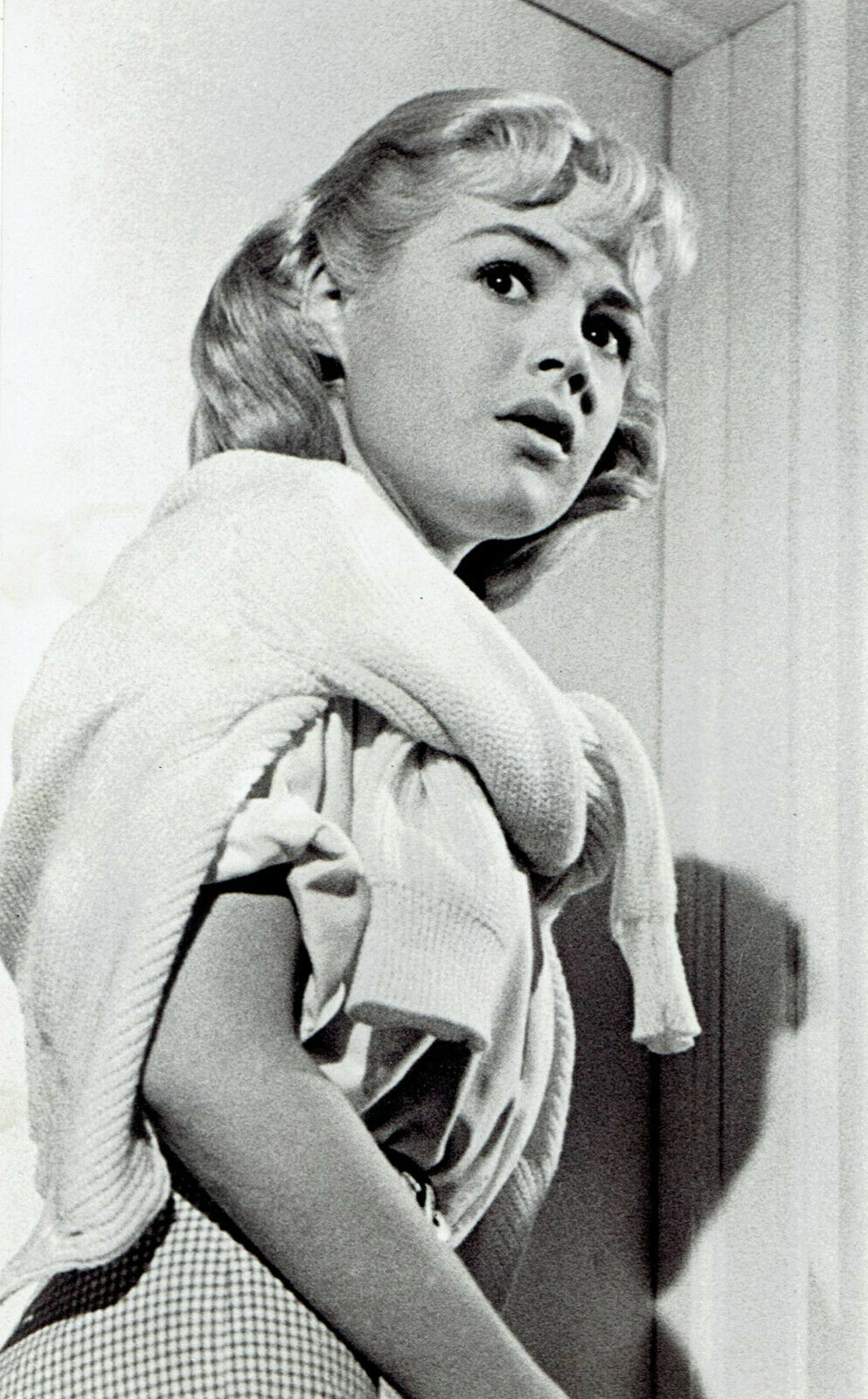
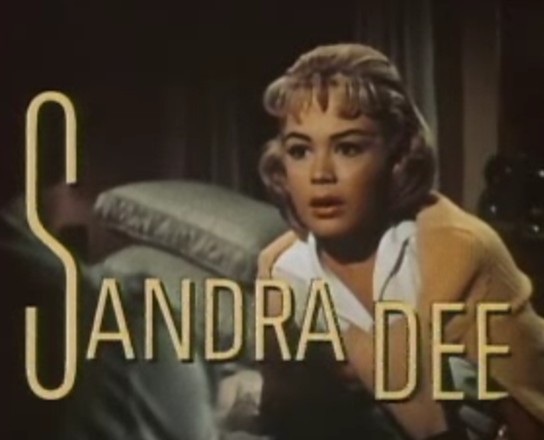
Following this, she was lent to Columbia Pictures to star in the teenage beach comedy Gidget (1959). Gidget was a significant hit, helping to popularize the beach party genre and leading to two film sequels, two television series, and two television movies, although Dee did not appear in any of the subsequent productions.
Universal then cast Dee as a tomboy opposite Audie Murphy in the Western romantic comedy The Wild and the Innocent (1959). Warner Bros. borrowed her for another melodrama in the vein of Imitation of Life, A Summer Place (1959), where she starred opposite Troy Donahue. This film was also a massive hit, and by the end of 1959, American box office exhibitors voted Dee the 16th-most popular star in the country.
Hunter reunited Dee with Turner and Saxon in Universal's thriller Portrait in Black (1960), which, despite mixed reviews, was a financial success. By the end of 1960, Dee was ranked as the nation's seventh-greatest star. Peter Ustinov cast her as the lead in the Cold War comedy Romanoff and Juliet (1961), where she reunited with John Gavin, her co-star from Imitation of Life.
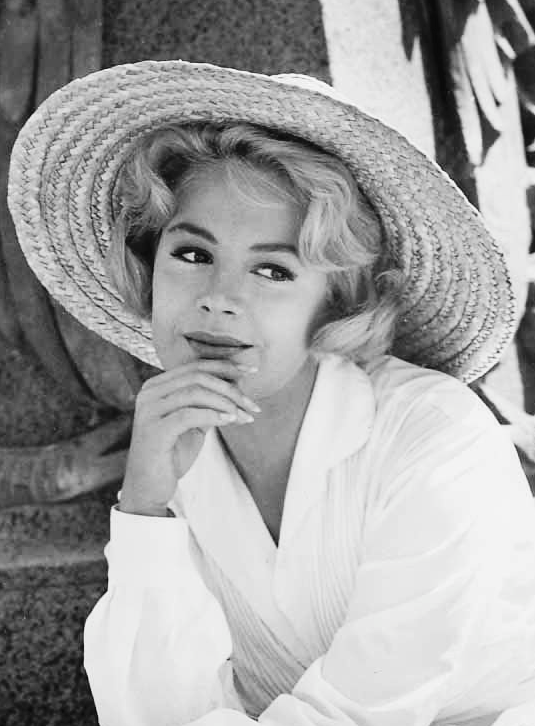
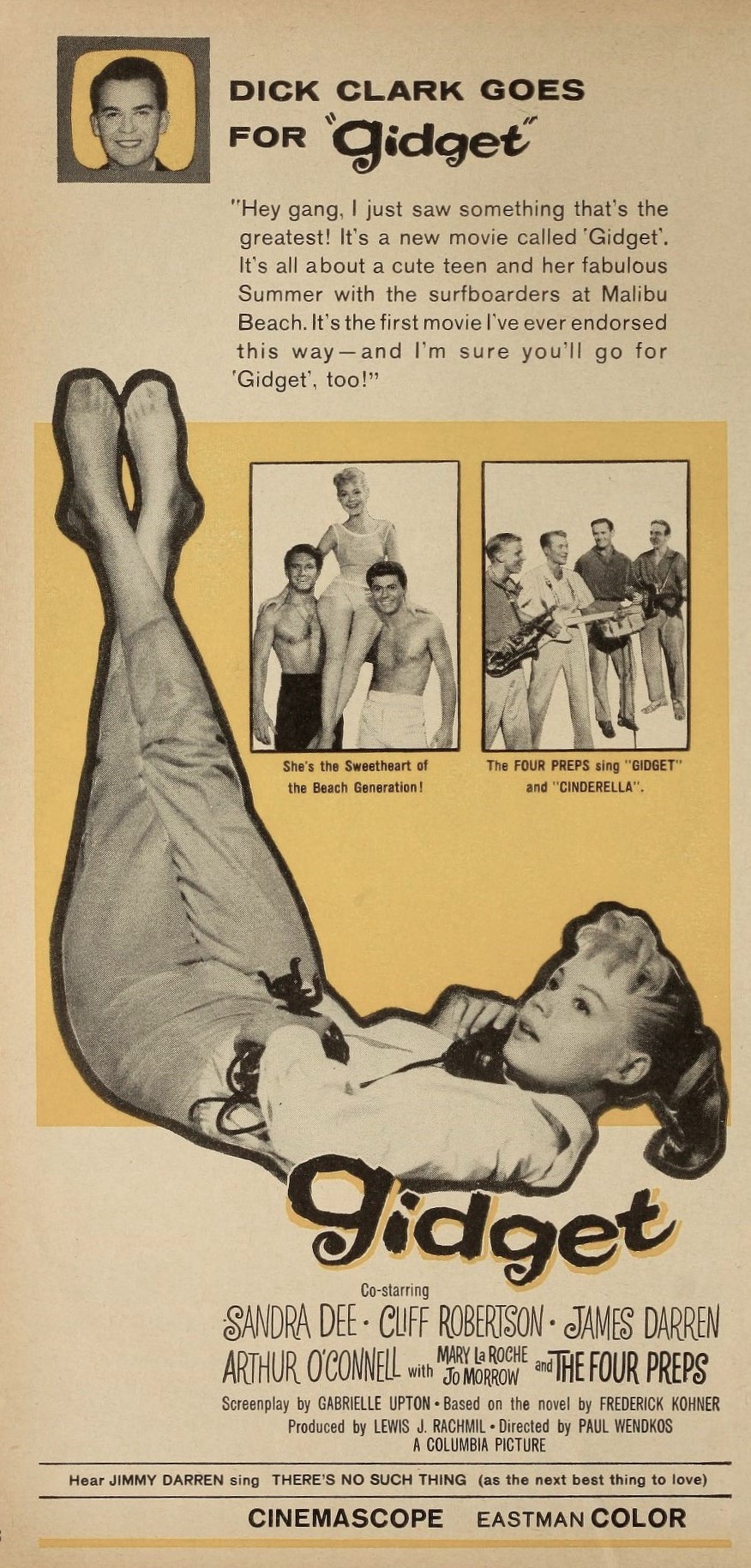
3.3. Marriage to Bobby Darin and Continued Work
Dee and Gavin collaborated again in Hunter's popular Tammy Tell Me True (1961), with Dee taking on the "Tammy" role previously played by Debbie Reynolds. In Come September (1961), she worked with singer Bobby Darin, who was making his film debut. Dee and Darin married on December 1, 1960, shortly after filming concluded. On December 16, 1961, she gave birth to their only child, a son named Dodd Mitchell Darin (also known as Morgan Mitchell Darin).
In 1961, with three years remaining on her existing Universal contract, Dee signed a new seven-year contract with the studio. She and Darin appeared together in the Hunter-produced romantic comedy If a Man Answers (1962). In 1963, she starred in the final "Tammy" film, Tammy and the Doctor, and the hit comedy Take Her, She's Mine, playing a character loosely inspired by Nora Ephron. That year, she was voted the eighth-greatest star in the country, marking her last appearance in the top 10 box office rankings. Dee then appeared in I'd Rather Be Rich (1964), a musical remake of It Started with Eve, again for Ross Hunter. She reunited with Darin in That Funny Feeling (1965) before starring in her final film under her Universal contract, the spy comedy A Man Could Get Killed (1966).
Dee also pursued a singing career in the early 1960s, recording several singles, including a cover version of "When I Fall in Love".
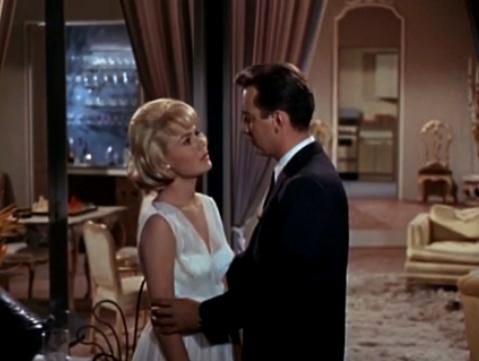
3.4. Career Decline and Later Roles
By the late 1960s, Sandra Dee's career had significantly slowed, and her contract with Universal Pictures was not renewed. Her acting appearances became rare following her 1967 divorce from Bobby Darin. In a 1967 interview with film critic Roger Ebert, Dee expressed her frustration with the studio system and the restrictive ingénue image that had been imposed upon her:
"Look at this--[a] cigarette. I like to smoke. I'm 25 years old, and it so happens that I like to smoke. So out in Hollywood the studio press agents are still pulling cigarettes out of my hand and covering my drink with a napkin whenever my picture is taken. Little Sandra Dee isn't supposed to smoke, you know. Or drink. Or breathe."
Dee appeared in the moderately successful film Doctor, You've Got to Be Kidding! in 1967. Ross Hunter invited her back to Universal for a co-starring role in Rosie! (1967), but the film did not achieve commercial success. After several years of inactivity in the film industry, Dee appeared in the 1970 American International Pictures occult horror film The Dunwich Horror, a loose adaptation of an H.P. Lovecraft story. In the film, she played a college student entangled in an occult ritual. Dee stated that she chose the role because she "couldn't put the script down" and hoped it would change her image. However, she refused to appear nude in the film's final sequence, as originally written in the screenplay.

Throughout the 1970s, Dee took on sporadic guest-starring roles in various television series, including Night Gallery, Fantasy Island, and Police Woman. Her final film performance was in the low-budget drama Lost (1983). In her later years, Dee candidly shared with a newspaper that she "felt like a has-been that never was." Her final acting credit was a voice-only appearance in a 1994 episode of the television series Frasier.
4. Personal Life and Struggles
Sandra Dee's private life was marked by significant personal challenges, including complex family dynamics and severe health issues, which she bravely confronted throughout her life.
4.1. Marriage and Family Life
Sandra Dee's marriage to singer Bobby Darin began on December 1, 1960, and was a highly publicized union. The couple welcomed their only child, Dodd Mitchell Darin, on December 16, 1961. Their joint appearances in films and their public image made them a prominent Hollywood couple. However, their marriage, which was often tumultuous, ended in divorce in 1967. Dodd Darin later chronicled his parents' lives in his 1994 book, Dream Lovers: The Magnificent Shattered Lives of Bobby Darin and Sandra Dee.
4.2. Health Issues and Personal Challenges
Dee battled a range of severe health issues and personal challenges for many years, including anorexia nervosa, depression, and alcoholism. These struggles were deeply intertwined with her childhood experiences, particularly the sexual abuse she endured from her stepfather, Eugene Douvan, after he married her mother.
In her later life, Dee finally confronted her mother about the abuse and her mother's apparent obliviousness to it. She recounted a night when she could no longer control the pressure: "My mother and I were at home with a few of her close friends, and she started eulogizing my stepfather. I was slowly getting more and more irate. Finally I said, 'Mom, shut up. A saint he wasn't.' My mother started defending him, and I said, 'Well, guess what your saint did to me? He had sex with me.' My mother was shocked, then angry. I knew I hurt her. I wanted to. I had so much anger toward her for not doing something to help me. But she ignored me, and the subject never came up again. I realize now that my mother erased the abuse from her own mind. It didn't exist, so she didn't have to feel guilty."
The death of her mother from lung cancer on December 27, 1987, at the age of 63, marked a particularly low point for Dee. For months, she became a self-described recluse, subsisting on soup, crackers, and Scotch, with her body weight plummeting to only 80 lb (80 lb). After she began vomiting blood, her son compelled her to seek medical and psychiatric treatment. Her mental and physical condition gradually improved, and she expressed a desire to return to acting, particularly in a television situation comedy, partly to experience a sense of belonging to a "family."
Dee stopped drinking entirely after being diagnosed with kidney failure in 2000, a condition attributed to years of heavy drinking and smoking. Her son's 1994 book, Dream Lovers, extensively detailed his mother's struggles with anorexia, drug, and alcohol problems, and explicitly stated that she had been sexually abused as a child by her stepfather.
5. Death
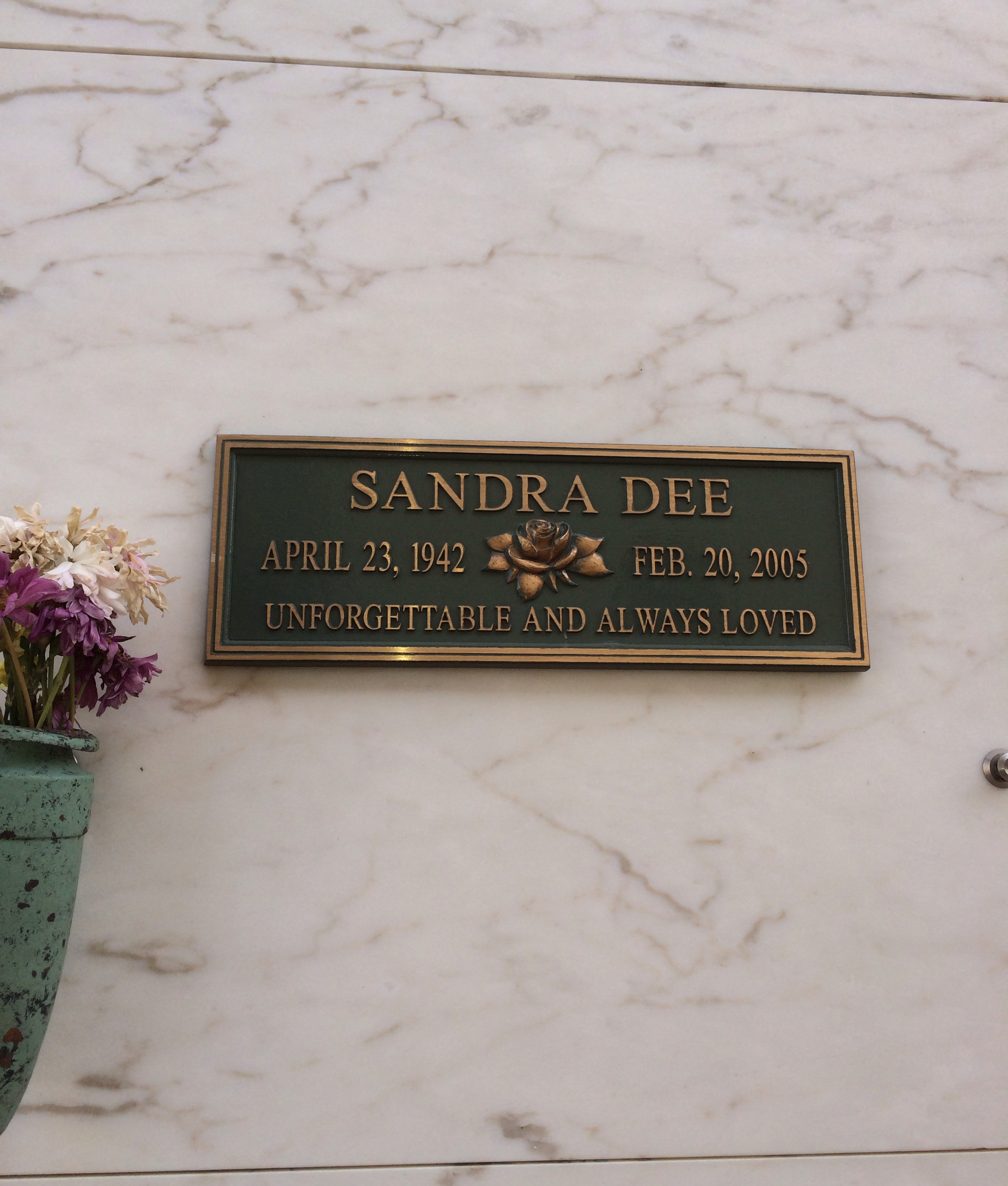
Sandra Dee died on February 20, 2005, at the age of 62, at the Los Robles Hospital & Medical Center in Thousand Oaks, California. Her death was caused by complications from kidney disease, a condition for which she had required kidney dialysis for the last four years of her life. She is interred in a crypt at Forest Lawn Memorial Park Cemetery in the Hollywood Hills, Los Angeles.
6. Legacy and Cultural Impact
Sandra Dee's career left an indelible mark on Hollywood and popular culture, embodying the innocence of a bygone era while also highlighting the inherent pressures of the studio system.
6.1. Cultural Mentions
Dee's enduring image as the wholesome teen idol is perhaps most famously immortalized in the song "Look at Me, I'm Sandra Dee," from the 1971 musical Grease and its 1978 film adaptation. This song, sung by the character Rizzo, satirizes Dee's pristine persona, reflecting her iconic status in the cultural consciousness. She is also referenced in the film American Graffiti, where a character tells a blonde woman she looks like Connie Stevens, to which the woman replies that she thinks of herself as looking like Sandra Dee.
6.2. Critical Evaluation
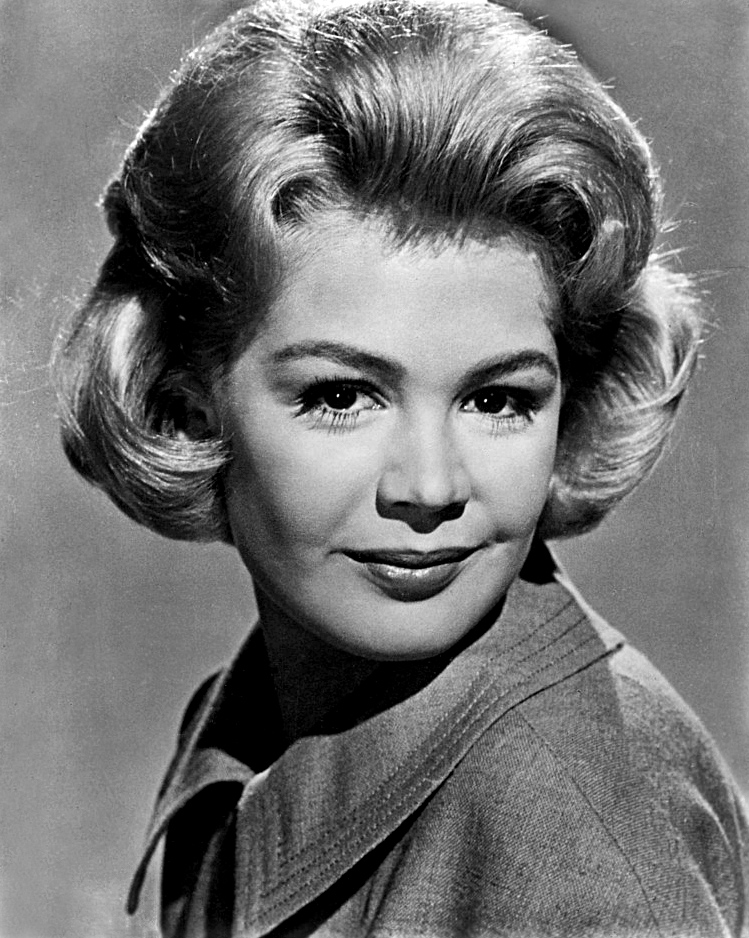
Sandra Dee's acting abilities and her carefully constructed persona as a teen idol have been subject to various critical evaluations. While her early roles showcased a natural charm and ability to portray innocent, relatable characters, some later critics found her performances to be somewhat one-dimensional, often typecast in roles that reinforced her "good girl" image. The musical Grease's satirical song "Look at Me, I'm Sandra Dee" reflects a perception that her image, while popular, was also perceived as overly saccharine or restrictive.
Her career trajectory also serves as a critical lens through which to view the pressures of the Hollywood studio system. Dee's own statements reveal her struggle with the constricting nature of her public persona, which dictated her behavior and image even off-screen. The studio's insistence on maintaining her innocent image, despite her personal maturity and desires, contributed to her feeling "like a has-been that never was." Her battles with mental and physical health issues, including anorexia and alcoholism, further underscore the immense psychological toll that the demands of early stardom and a controlled public image could take on young performers. Despite the challenges, Dee's work in films like Imitation of Life and Gidget remains culturally significant, solidifying her place as a memorable figure of 1950s and 1960s cinema.
7. Filmography
7.1. Film
| Year | Title | Role | Notes |
|---|---|---|---|
| 1957 | Until They Sail | Evelyn Leslie | |
| 1957 | The Snow Queen | Gerda | Voice: 1959 English version |
| 1958 | The Reluctant Debutante | Jane Broadbent | |
| 1958 | The Restless Years | Melinda Grant | Alternative title: The Wonderful Years |
| 1959 | A Stranger in My Arms | Pat Beasley | Alternative title: And Ride a Tiger |
| 1959 | Gidget | Gidget (Frances Lawrence) | |
| 1959 | Imitation of Life | Susie, age 16 | |
| 1959 | The Wild and the Innocent | Rosalie Stocker | |
| 1959 | A Summer Place | Molly Jorgenson | |
| 1960 | Portrait in Black | Cathy Cabot | |
| 1961 | Romanoff and Juliet | Juliet Moulsworth | Alternative title: Dig That Juliet |
| 1961 | Tammy Tell Me True | Tambrey "Tammy" Tyree | |
| 1961 | Come September | Sandy Stevens | |
| 1962 | If a Man Answers | Chantal Stacy | |
| 1963 | Tammy and the Doctor | Tambrey "Tammy" Tyree | |
| 1963 | Take Her, She's Mine | Mollie Michaelson | |
| 1964 | I'd Rather Be Rich | Cynthia Dulaine | |
| 1965 | That Funny Feeling | Joan Howell | |
| 1966 | A Man Could Get Killed | Amy Franklin | Alternative title: Welcome, Mr. Beddoes |
| 1967 | Doctor, You've Got to Be Kidding! | Heather Halloran | |
| 1967 | Rosie! | Daphne Shaw | |
| 1970 | The Dunwich Horror | Nancy Wagner | |
| 1972 | The Manhunter | Mara Bocock | Television film |
| 1972 | The Daughters of Joshua Cabe | Ada | Television film |
| 1974 | Houston, We've Got a Problem | Angie Cordell | Television film |
| 1977 | Fantasy Island | Francesca Hamilton | Television film |
| 1983 | Lost | Penny Morrison | Final film role |
7.2. Television
| Year | Title | Role | Notes |
|---|---|---|---|
| 1971-1972 | Night Gallery | Ann Bolt / Millicent/Marion Hardy | 2 episodes |
| 1972 | Love, American Style | Bonnie Galloway | Segment: "Love and the Sensuous Twin" |
| 1972 | The Sixth Sense | Alice Martin | Episode: "Through a Flame Darkly" |
| 1978 | Police Woman | Marie Quinn | Episode: "Blind Terror" |
| 1983 | Fantasy Island | Margaret Winslow | Episode: "Eternal Flame/A Date with Burt" |
| 1994 | Frasier | Connie (voice only) | Episode: "The Botched Language of Cranes" |
8. Awards and Accolades
Sandra Dee received several awards and recognitions throughout her career, particularly during her peak as a teen idol.
| Award | Category | Year | Nominated work | Result |
|---|---|---|---|---|
| Golden Globe Award | Most Promising Newcomer - Female | 1958 | Until They Sail | Won |
| Laurel Award | Top Female New Personality | 1959 | - | - |
| Top Female Comedy Performance | 1960 | Gidget | 5th place | |
| Top Female Star | - | 14th place | ||
| 1961 | - | 5th place | ||
| 1962 | - | 11th place | ||
| Top Female Comedy Performance | 1963 | If a Man Answers | 4th place | |
| Top Female Star | - | 6th place | ||
| Top Female Comedy Performance | 1964 | Take Her, She's Mine | 4th place | |
| Top Female Star | - | 7th place | ||
| 1965 | - | 9th place | ||
| 1966 | - | 10th place | ||
| 1967 | - | 14th place |
For a number of years, exhibitors voted Dee one of the most popular box-office stars in the United States:
- 1959-16th
- 1960-7th
- 1961-6th
- 1962-9th
- 1963-8th